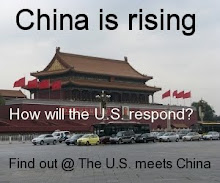Recently announced plans by the Afghan government for reconciliation and reintegration with the Taliban have been described to me by Afghan colleagues as both the best and the last idea that remains for how to bring the bring the nine year war to a close. The international security forces (ISAF) and the Taliban have been locked in a pseudo stalemate since the insurgent revival in 2007. While ISAF forces are more than capable of forcibly driving the Taliban from almost any area of Afghanistan, such offenses have roughly the same effect as squeezing a balloon. The more pressure you apply in one area the greater their presence will expand in another. As international support for the war has waned, the Karzai government has come under immense pressure to negotiate with the nebulous Taliban leadership in order to provide its coalition allies with an honorable exit strategy. While such a plan might seem feasible from the perspective of those sitting in Washington and perhaps even Kabul, the realities of how the insurgency is structured outside the capital discredit any hope for a lasting reconciliation.
During the course of interviews I conducted this summer in Kabul with members of the Force Reintegration Cell (F-RIC) at ISAF HQ I was shocked to learn that their plans for Taliban reintegration were based entirely on misconceptions about how the insurgency operates. The strategy, as it was explained to me, is to reward communities, not fighters, for allowing their "saddened brothers" to come down from the mountains and rejoin society. There exists two major problems with this line of thinking. First of all, as anyone who has spent serious time in places like Kandahar and Helmand can tell you, the Taliban do not live in the mountains, the majority of the day to day insurgent fighters live in the very villages that they are intimidating. Furthermore, if only communities that contain former insurgents are being rewarded with development money, we are suddenly going to find ourselves with many more fighters than we ever thought existed. Villages that were never known to have a Taliban presence before will inevitably begin blowing up their own roads in order to prove that they are deserving of reintegration money.
Apart from the difficulties surrounding how to actually identify low level insurgents, the question remains as to with whom the Karzai government actually intends to negotiate. When they ruled over most of Afghanistan in the 90's the Taliban possessed a hierarchical structure centering around Mullah Mohammed Omar. However, since their fall from power in 2001 and their eventual escape to Pakistan, the Taliban has since become an ambiguous grouping of smaller factions centering around key Mujahideen personalities such as Gulbuddin Hekmatyar and Jalaluddin Haqqani. Rumors abound of the senior Taliban leadership having reconstituted itself in Quetta, however, scholars such as Hassan Abbas challenge the veracity of these claims and question what if any influence the Quetta Shura would even have over the rest of the Taliban factions should it actually exist.
| |
-
▼
2010
(168)
- 10/17 - 10/24 (2)
- 10/10 - 10/17 (1)
- 09/26 - 10/03 (2)
- 09/19 - 09/26 (2)
- 09/12 - 09/19 (1)
- 08/29 - 09/05 (1)
- 08/22 - 08/29 (2)
- 08/08 - 08/15 (1)
- 08/01 - 08/08 (1)
- 07/25 - 08/01 (2)
- 07/18 - 07/25 (3)
- 07/11 - 07/18 (2)
- 07/04 - 07/11 (5)
- 06/27 - 07/04 (2)
- 06/20 - 06/27 (9)
- 06/13 - 06/20 (3)
- 06/06 - 06/13 (1)
- 05/30 - 06/06 (3)
- 05/23 - 05/30 (1)
- 05/16 - 05/23 (1)
- 05/09 - 05/16 (2)
- 05/02 - 05/09 (2)
- 04/25 - 05/02 (4)
- 04/18 - 04/25 (6)
- 04/11 - 04/18 (8)
- 04/04 - 04/11 (8)
- 03/28 - 04/04 (9)
- 03/21 - 03/28 (5)
- 03/14 - 03/21 (2)
- 03/07 - 03/14 (5)
- 02/28 - 03/07 (8)
- 02/21 - 02/28 (8)
- 02/14 - 02/21 (10)
- 02/07 - 02/14 (13)
- 01/31 - 02/07 (8)
- 01/24 - 01/31 (11)
- 01/17 - 01/24 (8)
- 01/10 - 01/17 (6)



.jpg)
0 comments:
Post a Comment